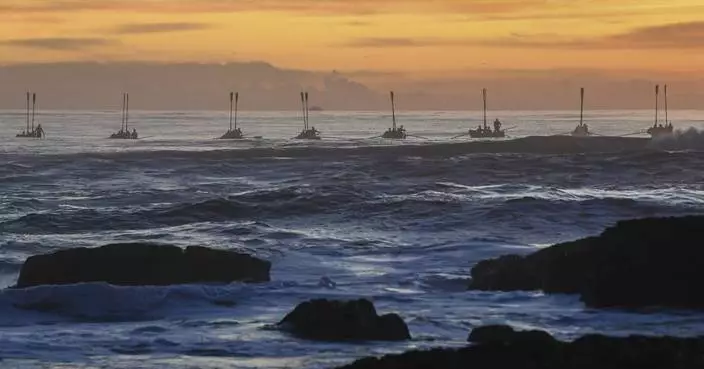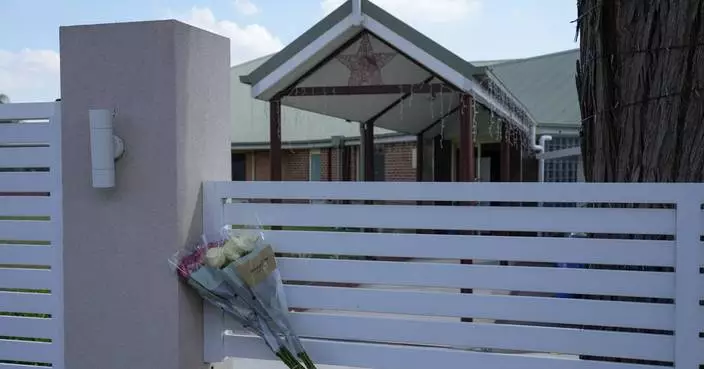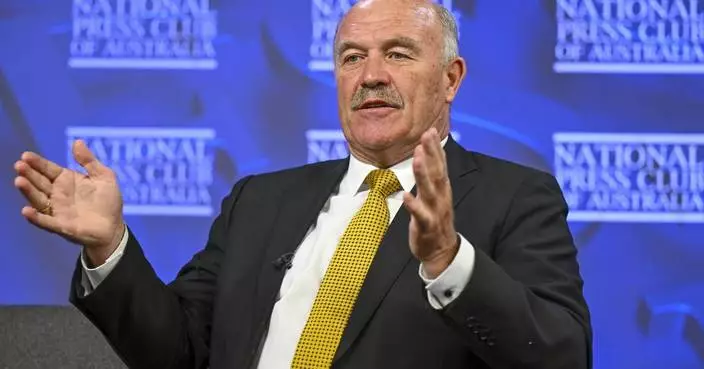A wayward wallaby disrupted downtown traffic by bounding across the Sydney Harbor Bridge on Tuesday with police in pursuit.
The adult male was captured without any apparent serious injury and is expected to be released back into the wild within days.
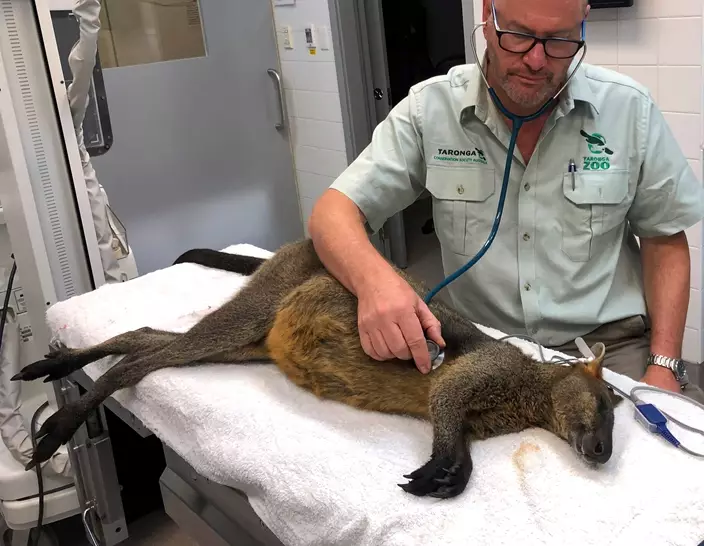
In this image released by Taronga Zoo Conservation Society, Dr. Larry Vogelnest, senior veterinarian at Taronga Zoo, checks a wallaby is checked at Taronga Wildlife Hospital in Sydney Tuesday, Jan. 16, 2018. (Taronga Zoo Conservation Society via AP)
Swamp wallabies, which are smaller marsupials than their kangaroo cousins, are common across eastern Australia, but are rarely seen in cities.
The startled wallaby hopped across the bridge's eight lanes of traffic an hour before sunrise then turned onto an expressway on the harbor's southern shore toward the Sydney Opera House. A pursuing police car with flashing lights videoed the animal's steady bounding before police officers captured him near the Sydney Conservatorium of Music and wrangled him into a horse float, police said.
Veterinarian Larry Vogelnest said the wallaby was "quite distressed" but he gave it a tranquilizer before taking it to the wildlife hospital at nearby Taronga Zoo.
"It had some minor grazes on its face and its hind legs," Vogelnest told reporters. "There don't seem to be any major injuries."
Vogel said he did not know where the wallaby had come from or how it found its way to the bridge.
"It's unusual obviously to have a wallaby running around on the Harbor Bridge, but there are more and more of these wallabies turning up in bush land close to the city," Vogelnest said.
Police Inspector Kylie Smith said several police cars plus horse-handlers from the police mounted unit had responded to the wallaby alert.
"When police arrived, the wallaby refused to obey police directions and initially evaded police," Smith joked.
Six officers eventually nabbed the macropod, including the horse-handlers who attempted to calm it down, she said.
"It was a very unusual job for a city police officer to be chasing a wallaby down the Harbor Bridge," she said, adding that the officers involved would likely never be assigned a similar job.
The wallaby was lucky it did not attempt the journey an hour later at 6 a.m. local time when traffic would have been far heavier, Smith said.
A motorist who identified himself as Ray told Sydney Radio 2GB of his surprise at seeing police cars with flashing lights pursuing a wallaby.
"I'm from the bush, I'm used to seeing them running all over the place, but I've never seen one so close in the city before," Ray said.
MELBOURNE, Australia (AP) — More than 100 long-finned pilot whales that beached on the western Australian coast Thursday have returned to sea, while 29 died on the shore, officials said.
Ships and a spotter plane were monitoring the rescued whales in case they returned to shore, the Parks and Wildlife Service of Western Australia state regional wildlife officer Pia Courtis said.
“So far so good, they haven't made it back to shore, but we will keep monitoring them,” Courtis told reporters.
Local whale researcher Ian Wiese joined hundreds of volunteers who helped rescue the whales at Toby’s Inlet near the tourist town of Dunsborough.
“When I first arrived, there was, I think, 160 in the water — almost out of the water — and there were a couple of hundred people who were with the whales, they were trying to comfort them and make sure that their heads were out of the water so they could breathe. And then after an hour or so, all of a sudden the ones that were in the water that were still alive left and went out to sea,” Wiese said.
“They may well decide to come back to shore somewhere on another beach nearby or something — that often happens, but we’re hopeful that they won’t,” Wiese added.
A team of wildlife officers, marine scientists and veterinarians had earlier reached the scene and reported 26 dead among up to 160 stranded.
Wiese said he earlier thought 31 whales had died, but the Department of Biodiversity, Conservation and Attractions later said the final death toll was 29.
In July, almost 100 long-finned pilot whales died or were euthanized after a two-day rescue attempt in a mass stranding on Cheynes Beach near the former whaling station of Albany, 355 kilometers (220 miles) southeast of Dunsborough.
Dunsborough is 285 kilometers (177 miles) by road south of Perth, Western Australia state's capital and largest city.
Based on previous strandings, including the 2023 Cheynes Beach event, euthanizing the beached whales is usually the most humane outcome, the department said in a statement.
“We always hope for the best outcome,” the statement said.
Wiese said Thursday was the third mass stranding he had responded to and the result was by far the best.
“It’s been a very good story today because normally with these sorts of strandings, you wind up with a 100 whales beaching and five or six being saved,” Wiese said.
Courtis said the whales were believed to have become stranded early Thursday.
The dead whales were dragged from the water so that their carcasses didn't attract sharks.
Marine scientist Holly Raudino said tissue samples had been taken from the dead whales to exclude potential causes of the stranding, in particular infectious disease.
Dunsborough was the scene of a mass stranding of 320 long-finned pilot whales in 1996. Only 20 died on that occasion, with rescuers returning the rest to sea.
Scientists don’t know what causes whales to strand, although it appears their location systems can be confused by gently sloping, sandy beaches.
Theories include that they are avoiding predators such as killer whales, or following a sick leader ashore. Human-made undersea noise could also interfere with their navigation.
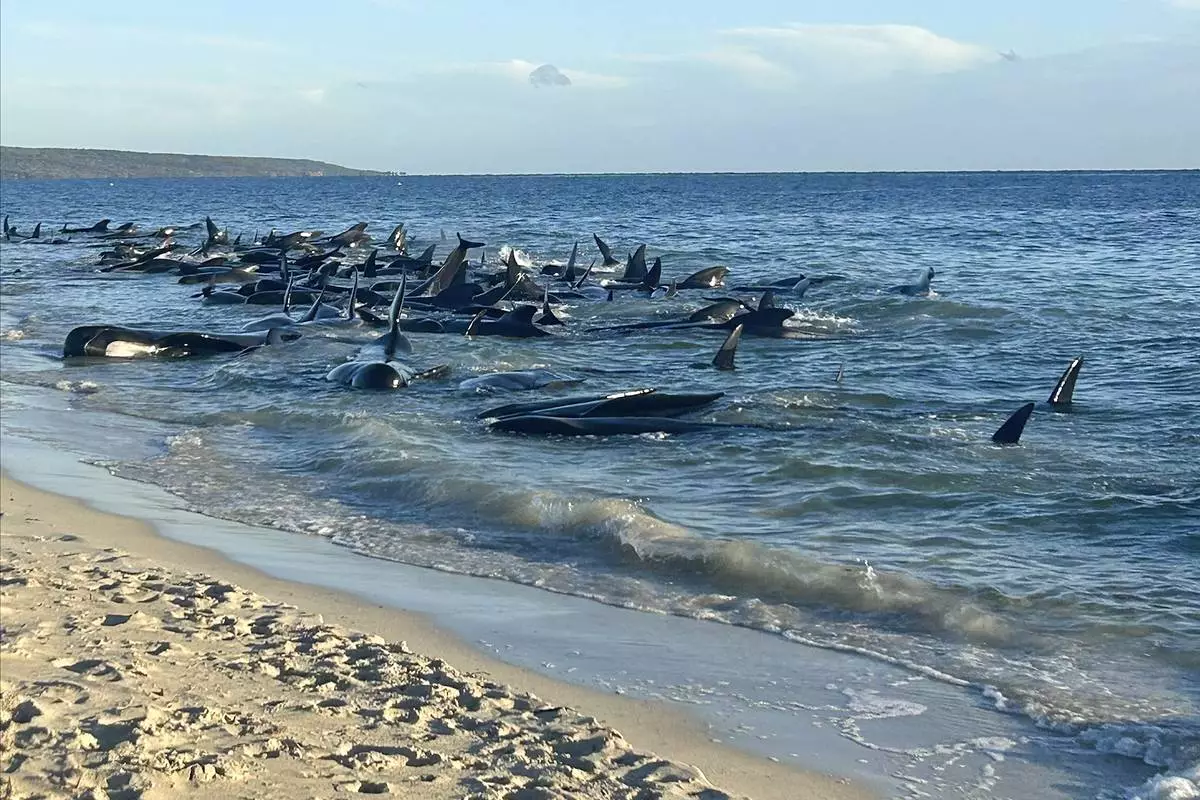
This image supplied by Department of Biodiversity, Conservation and Attractions, shows a pod of pilot whales stranded on a beach at Toby's Inlet in Western Australia, Thursday, April 25, 2024. Dozens of pilot whales have beached on the western Australian coast and wildlife authorities were attempting to rescue them, a state government said on Thursday.(Department of Biodiversity, Conservation and Attractions via AP)





